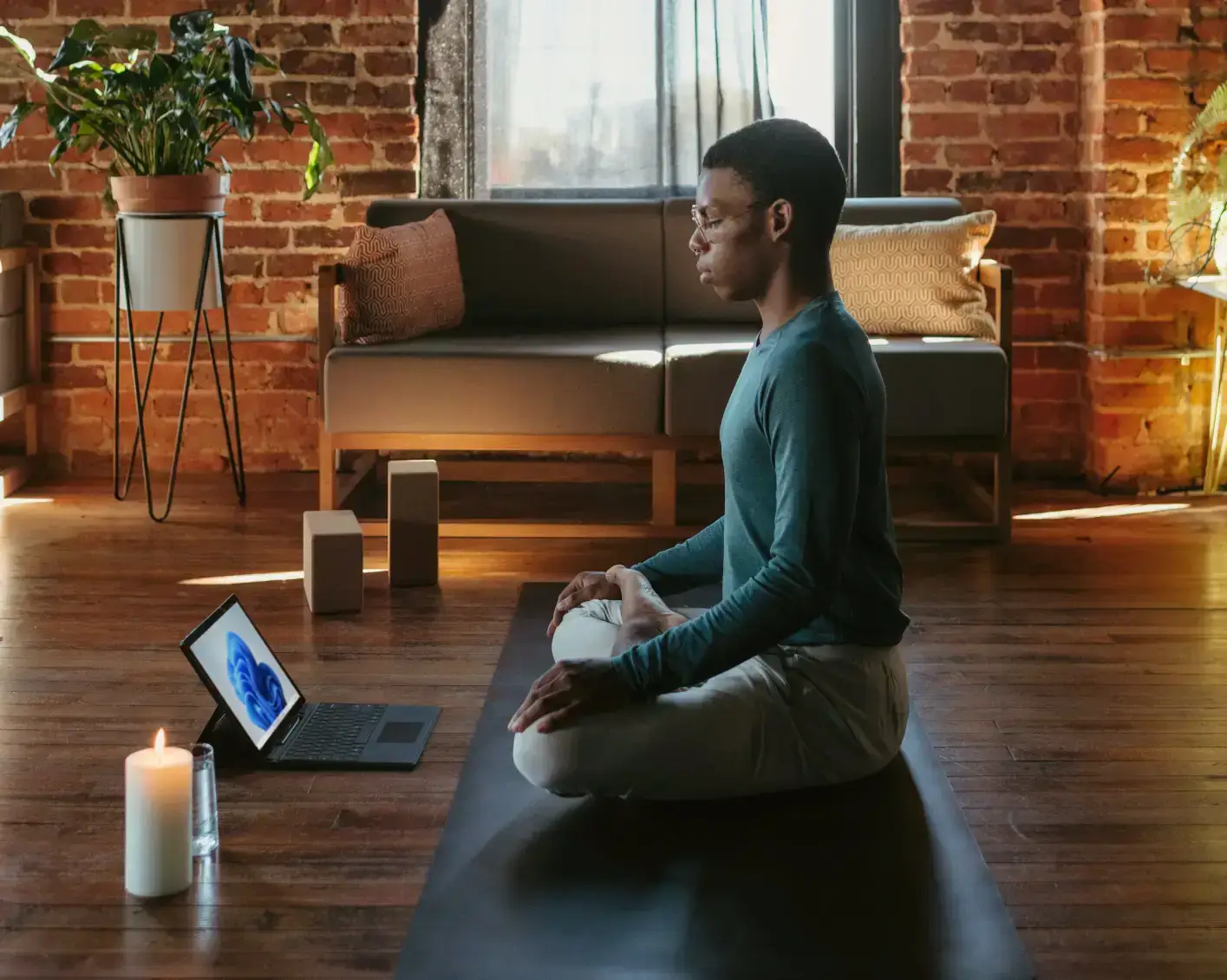Discover Our Stunning Layout Design
Original design features
Transform your WordPress website with our visually engaging two-column layout, designed specifically for wellness and yoga enthusiasts. This layout captivates readers with its meticulous structure, featuring a bold title, “The Benefits of Yoga,” prominently at the top. It invites your audience to explore the content below. On the left, you’ll find an informative text block that provides engaging insights. On the right, a tranquil image of a person practising yoga envelops visitors in a sense of calm.
Detailed elements and features
- Header: An eye-catching title that draws in your visitors.
- Text Blocks: Well-crafted paragraphs that elaborate on the benefits of yoga, ensuring clear communication of ideas.
- Image: A landscape-oriented photograph that enhances the serene ambiance, complemented by a calming candle image.
Design highlights
- Unique Typography: Bold titles and easy-to-read body text ensure clarity and engagement.
- Visual Enhancements: A circular graphical element in the background adds depth and aligns with the yoga theme.
- Responsive Layout: This design smoothly adapts to various screen sizes, ensuring an optimal viewing experience across all devices.
Aesthetics and accessibility
- Minimalist Style: Embrace a calming aesthetic perfect for wellness-focused sites.
- Effective White Space Use: Strategically implemented white space enhances readability and visual balance.
- Accessibility Features: High contrast between text and background improves legibility, catering to users with visual impairments.
Ten ways to organise content in WordPress
1. Effective use of categories
Organising your posts into categories helps readers find related content easily. It’s like creating a structured table of contents for your site, allowing users to navigate swiftly based on their interests. Proper categorisation improves user experience and SEO.
2. Utilising tags
Tags are great for providing more detailed information about your posts. They serve to connect content pieces through related keywords across different categories, improving search functionality within your WordPress site.
3. Implementing page hierarchies
Create parent and child pages to structure your site’s information seamlessly. This hierarchy is beneficial in websites that require clear navigation and helps in creating a logical flow of content.
4. Using custom menus
Building custom menus improves navigation and lets you highlight essential pages. Visitors can quickly find what they’re looking for, enhancing their overall experience on your WordPress website.
5. Highlighting featured posts
Showcasing featured posts on your homepage can guide visitors to your most important or popular content. It’s a powerful way to engage users right from the beginning.
6. Employing sidebars and widgets
Use sidebars and widgets to display different types of content like recent posts, categories, or social media links. This approach offers easy access to various site sections without cluttering the main content area.
7. Optimising with internal links
Linking pages and posts internally helps distribute traffic and improves site navigation. It also enhances SEO by passing link authority across the WordPress block themes.
8. Creating dynamic search functionality
Embark on a successful user journey by integrating a search bar that allows visitors to find content effortlessly. A robust search function increases site usability significantly.
9. Incorporating breadcrumb navigation
Breadcrumbs are beneficial for indicating the current page’s position within the site’s hierarchy. It assists users in easily retracing steps back to previous sections.
10. Utilising content recommendations
Powered by plugins or AI algorithms, recommending related articles at the end of posts can retain visitors longer and encourage exploration within your AI-enhanced WordPress website.
Ten different types of content in WordPress
1. Blog posts
The cornerstone of many WordPress websites, blog posts provide valuable information, opinion, and ideas to engage your audience. They can range from narratives to tutorials, offering versatile content forms for visitor interaction.
2. Static pages
Pages form the backbone of your website structure, used for static content like About Us or Contact pages that rarely change. They provide essential information prominently displayed and easily accessible by visitors.
3. Landing pages
Landing pages are designed to convert. Whether capturing email subscriptions or promoting product sales, they focus on driving specific actions from visitors, making them vital in marketing strategies.
4. Portfolios
A portfolio showcases your work or projects to potential clients and employers. WordPress block templates can be utilised to create stunning displays, highlighting your skills and accomplishments.
5. Galleries
Great for photographers and artists, galleries allow you to display images or videos elegantly. They enhance visual storytelling, making it easy for viewers to engage with multimedia content.
6. Testimonials
Showcase customer feedback and testimonials to build credibility and trust with potential clients. WordPress offers plugins to easily manage and display testimonials on your site attractively.
7. Infographics
Engage your audience with visually appealing infographics, which simplify complex data into easily digestible points. Infographics help convey information quickly and effectively.
8. Videos
Videos are a powerful medium to engage audiences, providing dynamic and interactive content that holds viewer’s attention longer than text alone. Videos can be embedded easily into your WordPress pages or posts.
9. Events
Announcements, registrations, or promotional pages for upcoming events can be seamlessly managed through WordPress. Widgets and plugins enhance their presentation, attracting more participants.
10. Newsletters
Although commonly associated with emails, newsletters can also have a digital archive on WordPress for subscribers to revisit past editions, allowing for more comprehensive engagement.
Conclusion
Elevate your site with our unique two-column layout designed for wellness content. By seamlessly blending compelling imagery, thoughtful typography, and a clean, minimalist style, this feature provides an engaging user experience. Whether you’re delving into yoga or other wellness themes, our WordPress website design caters perfectly to audiences seeking relaxation and well-being. Discover how our layout, along with Elementor alternatives and free WordPress themes, can create a space that deeply resonates with your audience!




